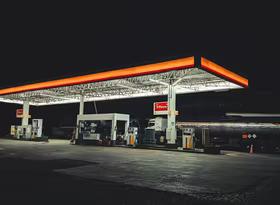
Construction costs surge in June quarter
Construction cost rises exceed expectations
Construction costs increased substantially in the June 2022 quarter. Non-residential construction costs grew 3.6%, residential construction costs grew 4.4%, and civil construction costs increased 5.4% from the previous quarter. Though our forecasts predicted strong quarterly growth for construction costs, the scale of the growth continued the trend of the last year by being larger than expected.
Civil construction costs grew an incredible 5.4% in the three months to June, the highest quarterly change on record (since 1980), which took annual civil construction cost growth to 14%pa. Non-residential construction costs were only 0.9% ahead of expectations, but residential construction costs were 2.0% higher than expected, keeping residential cost growth at 18%pa.
Cost growth has been broad-based
A more detailed look at the components of growth in non-residential and civil construction costs demonstrates how widespread cost increases have been within each sector.
Cost inflation accelerated across all non-residential building types, with the largest cost rises for the construction of shops and offices, up 3.9% from the March 2022 quarter, and warehouse and factory construction, up 4.8%.
Similar trends were present in civil construction in June, as each of the four categories within the civil construction cost index increased by more than 5% from the previous quarter.
Costs for the construction of electrical works grew fastest, accelerating to 23%pa in the June quarter. However, costs for the construction of pipelines, transport ways, and earthmoving and site work also rose 15%, 13%, and 8.3%pa respectively, demonstrating the widespread nature of cost pressures for civil construction activities.
Input costs up for both goods and services
Pressures in the construction industry have driven by rising costs for several key inputs. Over the last 12 months, input prices for materials and related services have both increased substantially, contributing to large increases in construction costs.
Goods costs rose strongly, some eased in June
Chart 4 depicts cost indices for a few key materials, which often make up a sizable portion of the overall cost of a project. We have excluded fuel costs from Chart 4, although they did grow strongly in the June quarter, with diesel up 29% and petrol up 7.3% from the prior quarter.
The cost of wood started to lift earlier than prices for some other materials, but along with the cost of iron ore and other semi-finished metal products, the rate of growth has slowed in recent quarters. Wood costs were up by 17%pa in June, less than the 30%pa recorded in the previous quarter. The recent high cost of wood is perhaps still filtering through to the cost of panels, boards, and plywood, which increased 14% in June from the previous quarter. Panel costs are not included in Chart 4 as they are not important to some construction types.
Costs for iron ore and semi-finished metal products were up again in June, but they grew at a slower rate. Costs increased 2.4% from the March quarter, about one-fifth as fast as the prior quarter, when costs grew nearly 12%. Like the early cost rises for wood filtering through to panel and plywood costs, the early growth in the cost of iron ore and semi-finished metal is perhaps putting downstream pressure on the cost of fabricated metal products, which were up 4.8% from the prior quarter in June, taking annual growth to over 19%.
The cost of cement and concrete accelerated in June, with growth reaching 9.3%pa, the fastest rate for at least 12 years.
Services costs continued to accelerate
The cost of several key construction services rose sharply in June, as high demand for labour combined with restricted supply accelerated construction labour costs. Though the costs of some key materials such as wood and metals may have been driving early growth in construction costs, future cost pressures look likely to be the product of rising costs for important construction services.
The costs of construction services were up across the board in the June quarter, with the cost of water, plumbing and drain laying services growing fastest, up 11% from the previous quarter. The cost indices included in Chart 5 are not the largest growing costs, but they are those which are often most significant in construction.
The cost of civil engineering services has accelerated further in recent quarters, up 3.5% in December 2021, 3.9% in March 2022, and 5.1% in June 2022 from the prior quarter. The cost of non-residential construction services is also growing at increasingly rapid rates, up 2.3%, 2.6%, and 4.1% over the last three quarters from the prior quarter.
The cost of residential construction services has grown more slowly than the previously mentioned construction types, with annual growth reaching 7.8% in June, much lower than non-residential and civil engineering services, which reached 11% and 15%pa respectively.
The cost of special trade services, which are an important component of civil construction projects, were up 8.2%pa in June. One notable construction service not included in Chart 5 is site preparation, which is a key component of residential and non-residential construction. The cost of site preparation services rose 16%pa in June 2022.
Outlook for construction cost pressures
We will update our official building cost forecasts in early October, but at this stage we expect the risks to our forecasts continue to lie on the upside. The most significant factor for our expectations of sustained cost pressures is the tightness of the labour market. Costs for construction services will continue to rise as a result of the difficulty finding labour, which will drive growth in overall construction costs, even if upward pressure on the cost of key materials continues to ease.





























